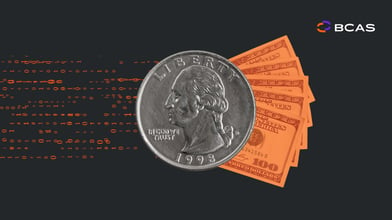Stablecoins are a core part of the upcoming Markets in Crypto Assets Regulation (‘MiCA’), with two entire titles dedicated to Asset Referenced Tokens (‘ARTs’) and E-Money Tokens (‘EMTs’). Various iterations of MiCA in its draft form have covered these two stablecoin categories from differing perspectives, with the two definitions in the final draft perhaps being the widest ones possible.
Starting off with EMTs, these are defined as “a type of crypto-asset that purports to maintain a stable value by referencing to the value of one official currency”. An “official currency” is then defined as “an official currency of a country issued by a central bank or other monetary authority”. In essence, therefore, any crypto-asset that maintains a stable value by referencing to a fiat currency issued by a recognised central bank will be classified as an EMT. The legislator made its intention clear in Recital 10 of MiCA, wherein it states that “to avoid circumvention of the rules laid down in Directive 2009/110/EC, any definition of ‘e-money tokens’ should be as wide as possible to capture all the types of crypto-assets referencing one single official currency of a country and strict conditions on the issuance of e-money tokens should be laid down, including the obligation for such e-money tokens to be issued either by a credit institution, or by an electronic money institution”.
ARTs are defined in a quasi-catch-all manner as follows: “a type of crypto-asset that is not an electronic money token and that purports to maintain a stable value by referencing to any other value or right or a combination thereof, including one or more official currencies”. First and foremost, ARTs are crypto-assets that are not EMTs, so automatically all single-fiat-pegged stablecoins are excluded as they would be classified as EMTs. The term “referencing to any other value or right or a combination thereof” is extremely wide, and can be subject to varying interpretations. The last phrase “including one or more official currencies” is purely indicative and inclusionary, and therefore is not of much assistance in determining what can be meant by value or right. It is reasonable to presume that values of commodities and assets are included. The term ‘right’ is a bit more ambiguous, and is meant to be an umbrella term to ensure the widest possible remit for the definition. Conversely, the other side of the camp may argue that a reference to any other value or right can potentially be interpreted as referring specifically to ‘assets’, since Recital 26 states that “offerors or persons seeking admission to trading of algorithmic crypto-assets that do not aim at stabilising the value of the crypto-assets by referencing one or several assets should in any event comply with Title II of this Regulation”. Then again, this is something that will likely be clarified in the future, and my hopes are not too high on the possibility that only reference to assets is encompassed under the definition of ARTs.
Most of the stablecoins that are well-known such as USDT, USDC, EURC, and EURT would potentially classify as EMTs, along with collateralised algorithmic stablecoins such as DAI since it also refers to the value of the US Dollar. The reason why I am specifically mentioning the word ‘collateralised’ is because strangely enough, it may well be argued that non-collateralised ARTs fall outside the scope of the same category due to Recital 9 of MiCA:
In the second sub-category of crypto-assets are ‘asset-referenced tokens’. They aim at maintaining a stable value by referencing to any other value or right, or combination thereof, including one or several official currencies. This sub-category covers all other crypto-assets than e-money tokens whose value is backed by assets, so to avoid circumvention and to make this Regulation future proof.
This leads me nicely to exploring the first potential way of issuing a stablecoin in such a way that would fall outside of scope of MiCA, without having to resort to issuing a stablecoin limited to EUR 5,000,000 in market cap or solely to qualified investors to be used solely by them as outlined in the exemptions under Article 15(3), since such exemptions would severely stunt the potential use-cases of such stablecoins.
Issuing an ART or EMT without an identifiable issuer
Decentralisation and anonymity/pseudonymity go a long way towards protecting a person from legal liability or obligations, as Satoshi Nakamoto very shrewdly proved to us in the past fourteen years. A clear white flag has been raised by the legislator in MiCA, where under Recital 12a, it is stated that “where crypto-assets have no identifiable issuer, they do not fall within Title II, III or IV of this Regulation”. Another recital gives us a hint as to what would further insulate the original creator of the stablecoin from potential regulatory ramifications, where Recital 11 goes on to say that “issuers of crypto-assets are entities which have control over the creation of crypto-assets”.
Therefore the first, most obvious line of defence is to issue a stablecoin anonymously or pseudonymously, since you would be automatically fall outside of scope of the applicable Titles of MiCA relating to crypto-asset issuances, ARTs, and EMTs. To add an additional layer of defence, the creation of ARTs & EMTs should take place via automated means that minimise or remove the intervention of the original issuer/creator. It would not make a difference on whether such stablecoins are collateralised or not, so there is full flexibility in the structuring thereof, including any mechanics for redemption or conversion. Naturally, if there are reserves to be maintained, then such reserves can hardly be kept with credit institutions due to the anonymity/pseudonymity of the issuer.
Issuers of ARTs outside the EU/EEA which do not conduct a PO or seek admission to trading
Before we expand further on this point, it is worth clarifying that the mere issuance of crypto-assets per se does not require regulatory approval; it is the public offering thereof, or when seeking admission to trading of such crypto-assets, that tends to fall under regulatory purview. Issuers of crypto-assets (apart from ARTs & EMTs) that intend on conducting a public offering or seek admission to trading must notify the relevant whitepaper to the competent authority prior to doing such activities, and the same applies to EMT issuers (which issuers however can only be licensed credit institutions or e-money institutions). In the case of ARTs, however, the issuer must obtain the requisite regulatory approval from the competent authority prior to conducting a public offering or seeking admission to trading of ARTs, as per Article 15(1):
No person shall, within the Union, offer asset-referenced tokens to the public, or seek an admission of such crypto-assets to trading on a trading platform for crypto-assets, unless that person is the issuer of such asset-referenced tokens and:
(a) Is a legal person or other undertaking that is established in the Union and have been authorised to do so in accordance with Article 19 by the competent authority of their home Member State; or
(b) Is a credit institution and complies with Article 15a
While the term ‘seeking admission to trading’ on the platforms of crypto-asset service providers is clear enough, the term ‘offer to the public’ merits some deeper consideration. It has been defined under Article 3 as “a communication to persons in any form and by any means, presenting sufficient information on the terms of the offer and the crypto-assets to be offered, so as to enable potential holders to decide whether to purchase those crypto-assets”. Two clear points that can be extracted from this definition is that there must be ‘sufficient information’ to the point that potential holders can decide whether to purchase those crypto-assets or not, and that there must be terms of an ‘offer’, meaning that there should be an active attempt by the issuer to sell ARTs.
The legislator further clarifies that “the mere admission of crypto-assets to trading on a trading platform or the publication of bid and offer prices is not to be regarded in itself as an offer of crypto-assets to the public. Such publication only constitutes an offer of crypto-assets to the public where it includes a communication constituting the offer to the public under this Regulation” (Recital 15a).
Therefore, ART issuers which are not performing an offer to the public, or seeking admission to trading, will not fall under the ambit of Article 15, and would therefore not be required to seek approval by the competent authority. However, ART issuers located within the EU would still need to comply with other provisions relating to reporting, retention of reserves, etc. A contrario sensu, can it be argued that ART issuers located outside the EU would not need to comply with such provisions?
The first port of call to explore this hypothesis further is to take a look at the definition of ‘issuer of crypto-assets’, which is defined as “the natural or legal person or other undertaking who issues the crypto-assets”. Since the definition itself does not give a clear indication as to whether such natural or legal person must be established within the EU, reference has to be made to other provisions in MiCA.
An interesting argument can be built on the basis of Recital 27, which states the following:
To ensure the proper supervision and monitoring of offers to the public of asset-referenced tokens, issuers of asset-referenced tokens should have a registered office in the Union.
This Recital helps one build the argument that issuers of ARTs should only have a registered office in the Union if they are conducting an offer to the public of ARTs. If there is no offering to the public of ARTs, and for good measure, no admission to trading of ARTs is being sought by the issuer, then they need not be established in the Union; this is a point that is also exacerbated under Article 15(1a), which states that an offer to the public or the pursuit of admission to trading of an ART may only be done by “a legal person or other undertaking that is established in the Union”.
Conversely, it is reasonable to state that issuers of ARTs located outside the Union, and which are not engaging in an offer to the public within the Union or otherwise seeking admission to trading on a crypto-asset service provider’s platform, are not regulated under MiCA and would not need to abide with the applicable provisions, namely Title III.
A free-floating collateralised stablecoin
An ART’s fundamental characteristic is that it “purports to maintain a stable value by referencing to any other value or right or a combination thereof, including one or more official currencies”. Collateralisation, or the lack thereof, is not a defining feature of an ART, although naturally an ART issued in compliance with MiCA must be collateralised. What this means is that a collateralised stablecoin with a free-floating price point would actually fall outside the definition of an ART, and hence not fall within the scope of MiCA, since there would be no discernible reference to a right or value in order to stabilise the price of the crypto-asset.
While this may sound technically implausible, a concept was remarkably designed by the recently deceased Nikolai Mushegian, co-founder of the DAI and RAI stablecoins. The concept is named Rico, and it is defined as a “free-floating collateralized stablecoin designed with an emphasis on automation and market rate discovery”. Whether the concept can be actualised or not remains to be seen, but if it can, it has a high chance of being a form of stablecoin that falls outside the scope of the wide-reaching MiCA.
EMT issuers that do not perform an offer to the public or seek admission to trading
It is important to firstly clarify that, contrary to ARTs, the mere issuance of a crypto-asset which reference a single Union currency may well be sufficient to have such action falling within the scope of ‘an offer to the public in the Union’. Article 43(1a) states:
An e-money token which references a Union currency shall be deemed to be offered to the public in the Union.
It would plausibly be almost impossible to issue an unregulated crypto-asset which references the Euro for instance. On the contrary, the issuance of an EMT which does not reference a Union currency may well benefit from the previously presented argumentations on the potential exemptions vis-à-vis ARTs, since Article 43 likewise covers only the public offering or seeking of admission to trading as activities which require the issuer to be authorised as a credit institution or e-money institution. Therefore, an issuer which is not conducting an offer to the public of an EMT (which does not reference a Union currency) or seeking its admission to trading, and is additionally located outside of the Union, would potentially not be required to abide by Title IV of MiCA.
Exempted EMTs
Article 43(2b) of MiCA highlights two scenarios where an EMT issuer would be exempted from complying with the provisions of the same Article 43, namely:
- Monetary value stored on instruments exempted as specified in Article 3(k) of Directive 2007/64/EC
- Monetary value that is used to make payment transactions exempted as specified in Article 3(l) of Directive 2007/64/EC
The Directive being referred to is the Payment Services Directive (I), which was revised as the PSD2, and the PSD3 being at an advanced stage. Article 3 of the PSD deals with exempted instruments, and specifically 3(k) and 3(l) respectively cover the following:
- services based on instruments that can be used to acquire goods or services only in the premises used by the issuer or under a commercial agreement with the issuer either within a limited network of service providers or for a limited range of goods or services;
- payment transactions executed by means of any telecommunication, digital or IT device, where the goods or services purchased are delivered to and are to be used through a telecommunication, digital or IT device, provided that the telecommunication, digital or IT operator does not act only as an intermediary between the payment service user and the supplier of the goods and services
The first point is of potential interest since it may be applied to stablecoins that are issued under a commercial agreement for use within a limited network of crypto-asset service providers, such as exchanges. There would need to be restrictions in place that would prohibit the use of the crypto-asset outside such limited network, but there are apparently no restrictions on the size of the ‘limited network’ of CASPs itself.
The second point is a bit more difficult to apply to stablecoins as generally seen and understood by the industry at large, and certainly does not apply to stablecoins used as a means of exchange per se. They can apply to stablecoins that are used as a means of payment for goods or services delivered or to be used through a “telecommunication, digital or IT device”, but it is not the scope of this article to delve into what such instances may constitute.
It is important to keep in mind that the Payment Services Directive, throughout its various iterations, remains a Directive, meaning that it is subject to varying implementations across the different Member States of the EU. In order to explore such exemptions to a specific degree, one would ideally need to look at the implementations of the PSD in one or more Member States.
Conclusion
It is safe to say that it is quite difficult to issue a stablecoin in the EU in such a manner that it would completely fall outside of scope of the Regulation, since Article 2 of MiCA clearly states that it applies to ‘natural and legal persons and other undertakings that are engaged in the issuance, offer to the public, and admission to trading of crypto-assets’, while Recital 8 states that “’Crypto-assets’ and ‘distributed ledger technology’ should therefore be defined as widely as possible to capture all types of crypto-assets which currently fall outside the scope of Union legislation on financial services”. However, there may well exist certain loopholes, intended or otherwise, that would allow for such to potentially take place, as discussed above.
Perhaps the most important takeaway is that the initial fears that each and every stablecoin that has been issued, or will ever be issued, will be regulated or impacted by MiCA, are not all justified, and that effectively stablecoins that have already been issued and well in circulation before the applicability of MiCA could arguably not be impacted by such Regulation since there would be no ‘offer to the public’ required, and they would already be listed on most of the major CASP platforms. Still, the intention of the legislator is clear – it intends on clamping down on the issuance of alternative monetary instruments that may well threaten the status of fiat currencies, and regulate them accordingly. On this point, it is always therefore advisable to seek competent legal advice before issuing an ART or EMT, wherever in the world you may be.
This article has been written on the basis of the latest MiCA draft published on the 5th of October 2022, and may be subject to further changes until its official publication in the European Union’s Official Journal.


